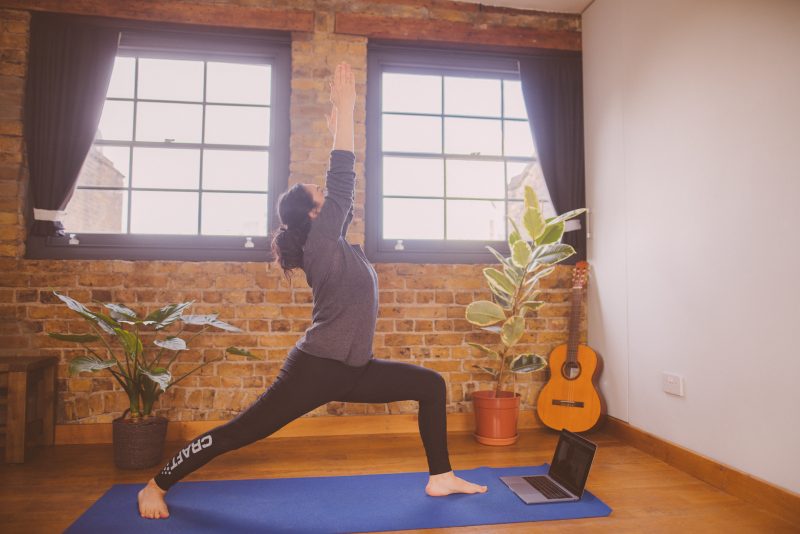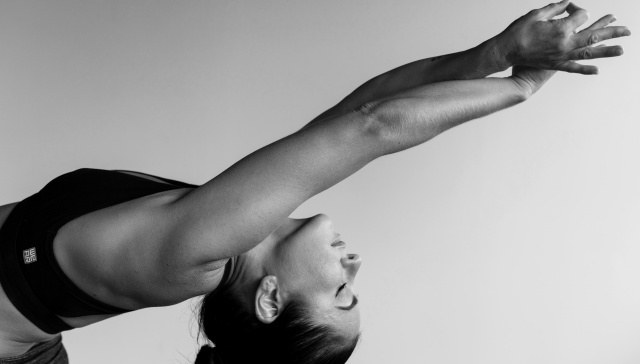Warrior 1 Pose
Virabhadrasana 1

Beginners guide to Warrior 1 aka Virabhadrasana
What does Virabhadrasana mean in sanskrit?
The Warrior series has undoubtedly become some of the most iconic poses of yoga, known as the Virabhadrasana in Sanskrit, named after a mythical Hindu warrior, Virabhadra. This group of lunging standing poses has three types, and Warrior 1 is the first in that series. Warrior 1 is a frequent element in vinyasa, Iyengar and ashtanga yoga with use in hatha and kundalini yoga.
Benefits of Warrior 1:
There are many benefits of Warrior 1 pose; it stretches and strengthens the feet, ankles, thigh and calf muscles, it improves your mobility in your shoulder and hip joints while opening the chest and lungs and it’s also a great pose for improving your balance and posture.
How to do Warrior 1:
To enter Warrior 1 pose, from standing (or Mountain pose) you step your left foot back nice and wide with your toes pointing out slightly at a 45 degree angle and your feet hip distance apart, making sure you feel stable and well balanced, pressing down with your feet. Bring your hands to your hips, align your hips with the front of your mat. Keep your torso facing the front of the mat and your shoulders relaxed and level with one another. Bend your right knee and keep your right thigh parallel to the floor, keeping your weight in the front heel. Press your back foot down and lift from your core, while keeping your back leg working to stablise you. Draw your lower abdomen gently in and up, lengthen your spine and soften the base of your neck.
Collarbones spread, lift your arms over your head, opening the chest. Check that your shoulders are relaxed and face softened, with the strength flowing from your foundation.
How to exit Warrior 1:
To come out of Warrior 1 pose, inhale and press your back heel down as you straighten your front leg. Exhale and lower your arms, as you step your back foot forwards coming back to standing (or Mountain pose). You will often do Warrior 1 pose in a sequence before Warrior 3.
Poses to know:
It’s useful to master Upward Facing Dog, Forward Fold and Downward Facing Dog pose, before Warrior 1 pose, so you can transition in and out of the pose with ease. You may also wish to learn Warrior 2 and Warrior 3 at the same time.
Warrior 1 adjustments:
You can use props to make Warrior 1 pose easier by supporting your back heel with a beanbag, or rolled-up blanket, or small bolster, or a block.
Warrior 1 variations:
There are a number of variations of Warrior 1 pose (not to be confused with Warrior 2 and Warrior 3 which are different poses in themselves). As well as having your hands on your hips you can adopt different arm positions for Warrior 1 such as having your hands in prayer position in front of your chest or bringing your hands behind your back and holding your elbows. There’s also a variation known as Humble warrior pose, which begins in Warrior 1 before you lower your upper body down inside of your bent front leg, with your fingers interlocked behind your back and your arms extended straight up and lifted.
Most popular yoga poses in the UK
The warrior pose is a popular pose in the UK with 1000 searches per month on Google. But Downward Dog Is the top searched yoga pose with 8100 searches a month, followed by Handstand (3,600), headstand (1,600), and warrior pose (1000 searches a month). Shoulder stand comes after with 880 searches per month, followed by Trikonasana with 590 searches a month
 Live Yoga Teachers
Live Yoga Teachers
